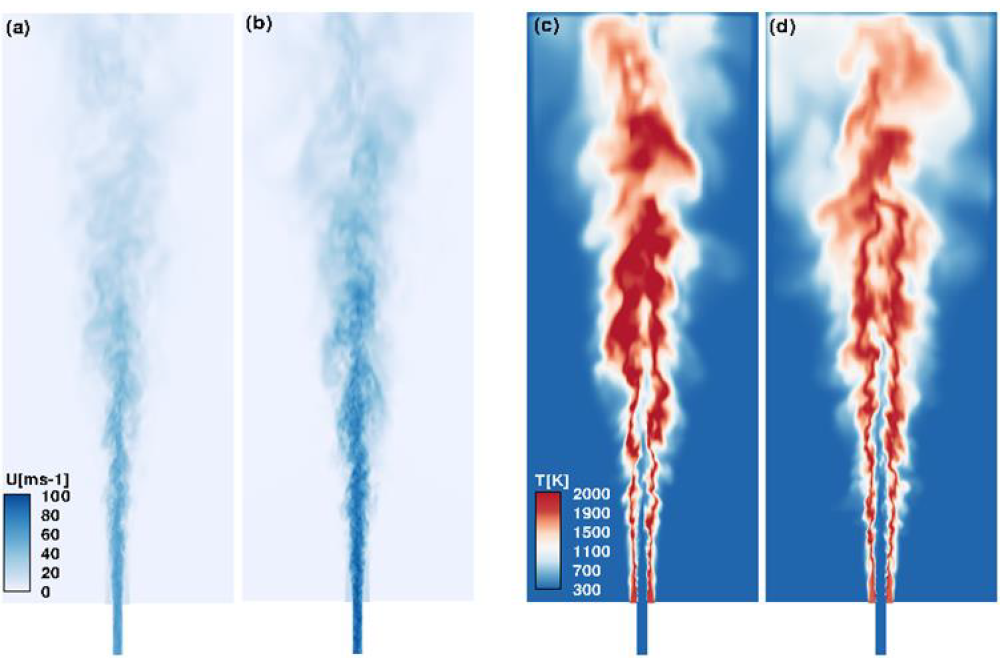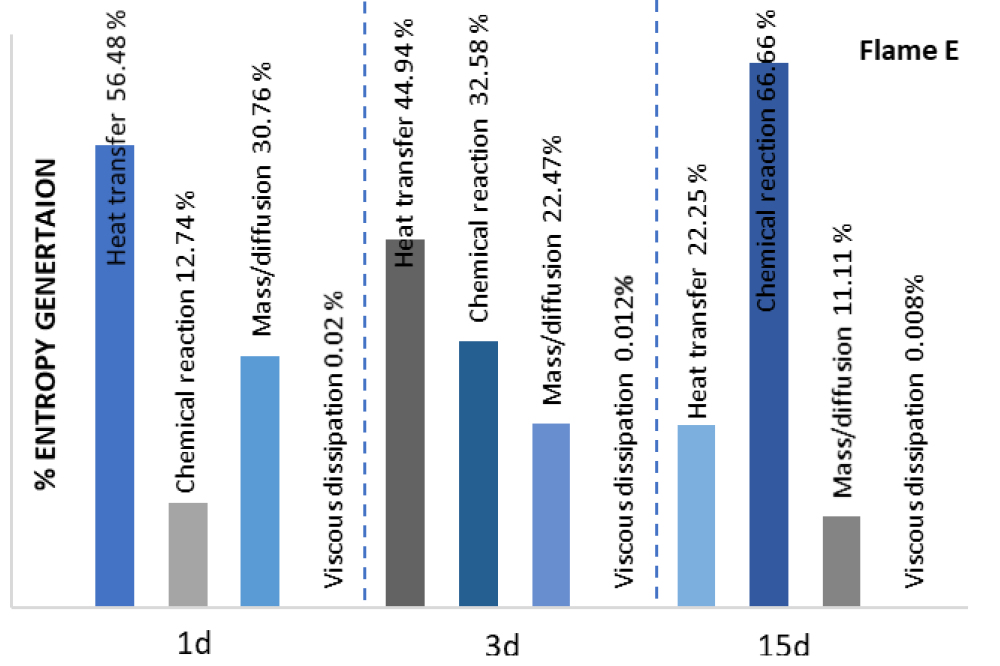Coupled Eulerian Stochastic Field Method with FGM-Based Detailed Tabulated Chemistry Approach for LES/RANS of Sandia Flame Series D-E and F
Einleitung
The objective of this project is to compute the turbulence chemistry interactions for turbulent reacting flow. Thus, the hybrid filtered Eulerian stochastic field (ESF) method coupled with the Flamelet Generated Manifold (FGM) chemistry tabulation strategy is applied on Sandia flame D, E and F. The results of the turbulent reacting flow (Sandia flames) will be than used for computing the entropy generation. High-performance computing is required since the problem involve many complexes processes such turbulence, reactions, diffusion...
Methoden
The open-source C++ library OpenFOAM version 16.12, in which a new solver based on Eulerian stochastic field (ESF) method coupled with FGM has been implemented, is used. The method (ESF/FGM) in large eddy simulation framework consists first of all of solving the filtered transport equations for the control variables mixture fraction and progress variable together with the classical filtered transport equations for mass density and momentum. This yields to an unclosed reaction source term. The effect of turbulent scales on the chemical reactions at the sub-grid scale must be taken into account to correctly represent the thermochemical state and close the reaction source term. For this purpose, the knowledge of the sub-grid evolution of the controlling variables is needed. Thus, the Eulerian Stochastic Fields (ESF) method is adopted, which is based on the transport equation of the Favre-filtered joint scalar probability density function (FDF) of the controlling variables. In this approach, the FDF is represented as an ensemble of number of Eulerian stochastic fields for each of the table controlling variables, for which additional stochastic differential equations are solved. The simulations were carried on to solve the set of obtained partial differential equations applying the merged PISO- SIMPLE algorithm and low Mach number formulation.
Ergebnisse
This project was our first steps in using OpenFoam. The choice of the suitable numerical schemes and models for the simulation of the turbulent reacting flow using the Eulerian stochastic field method had taken a quite long time to ensure the convergence and the accuracy of the simulations. The flow field results as well as all the thermochemical data for Sandia flame D and E were obtained. Furthermore, entropy generation analysis by applying the hybrid filtered Eulerian stochastic field (ESF) method coupled with the FGM chemistry tabulation strategy was carried out for the first time and ending by suggesting two novel methods for quantifying entropy generation sources in addition to the classical-thermodynamics-based one.
Diskussion
The hybrid filtered Eulerian stochastic field (ESF) showed a good predictability for turbulent reacting flow as well as for the entropy generation source terms. The simulations carried out on the Lichtenberg High Performance Computer provide high accuracy of the turbulence-chemistry interaction at sub-grid scale and a novel approach for the second law analysis. Further work will be performed to enlarge the use of ESF approach for other configurations.






